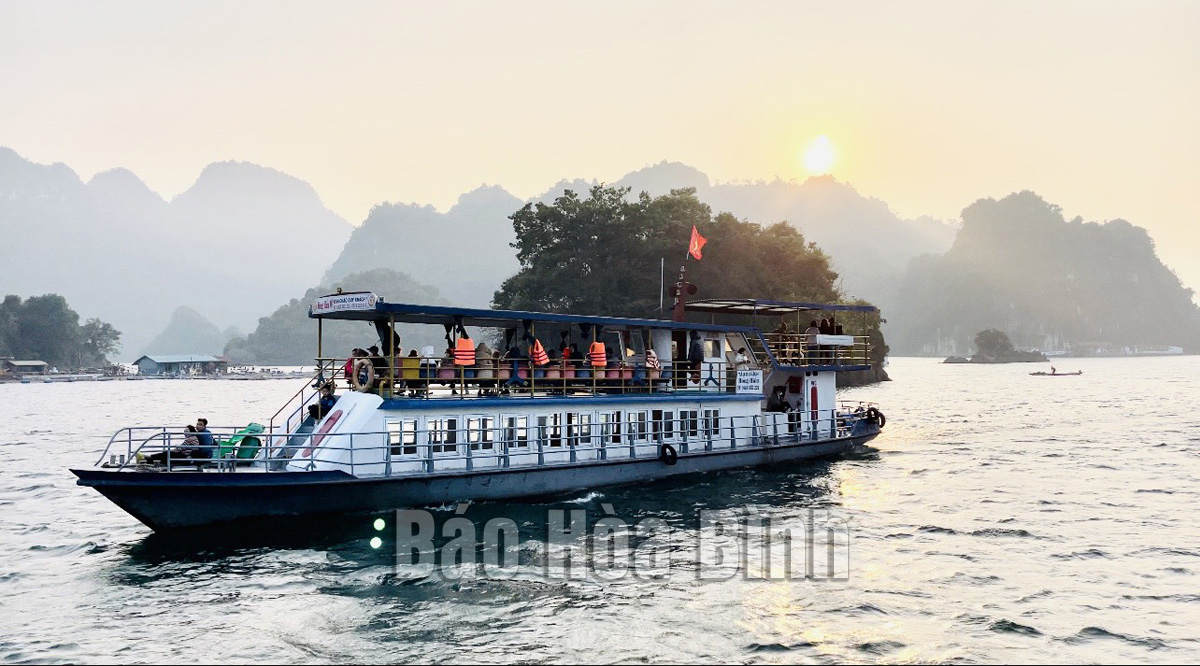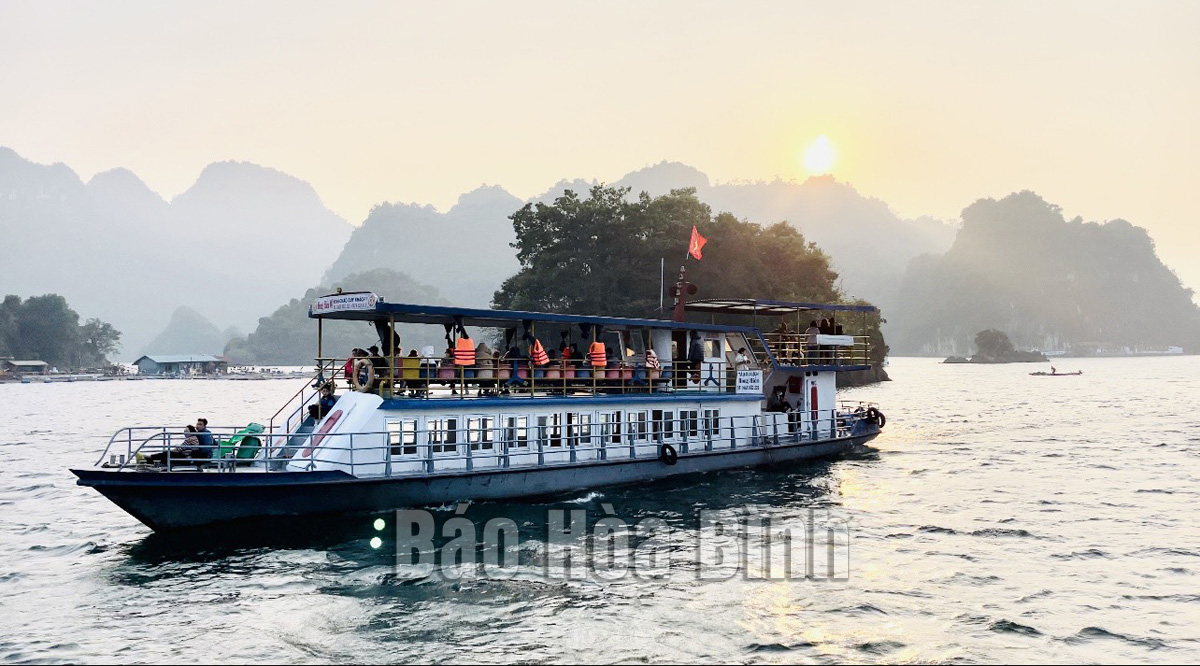
(HBO) – Hoa Binh lake, the biggest man made in Southeast Asia, is about 70km long, crossing 17 communes of one city and five district. It houses 47 large and small islands. The lake area features breathtaking landscapes, enticing cultures of different ethnic groups, and renowned spiritual tourist destinations.
Tourists explore Hoa Binh lake by boat on the Lunar
New Year holiday.
On August 1, 2016, the Prime Minister issued
Decision No. 1528/QD-TTg approving a master plan for developing the lake as a
national tourist area until 2030. On June 22, 2017, the Standing Board of the
provincial Party Committee issued Resolution No. 14-NQ/TU on the development of
the Hoa Binh Lake tourist area into a national one.
After half a decade implementing Resolution No.
14, the province has seen the lake area so far meeting three out of five
criteria set for a national tourist site. Many of its socio-economic
infrastructure projects have been completed, contributing to improving the
conditions of local travel, production and people’s livelihoods.
Currently, the Hoa Binh lake tourist area has
107 accommodation establishments, employing 1,200 workers. Its restaurants,
entertainment spots, tourist attractions, and tours have been built and
connected with localities in the province and country, creating a fairly
diverse tourism ecosystem attractive to visitors.
Every year, the province organises famtrip and
presstrip delegations to invite tourism associations, travel and media agencies
from other provinces to join hands promoting Hoa Binh’s tourism. Other measures
include connecting businesses for partnerships, and expanding tourist markets.
To date, there have been 18 projects worth some 3.5 trillion VND (147.58
million USD) in total approved for investment in the Hoa Binh lake area.
In order to meet remaining criteria for the area
to be recognised as a national tourism site by 2025, Hoa Binh is working to
attract investment projects serving the development of accommodation facilities
rated three stars and above; promoting community-based tourism; tackling investors’
obstacles; and running communications campaigns for raising public awareness on
tourism promotion and environmental protection./.
Located just a 20-minute drive from Hoa Binh City, Ora Hill Farmstay & Glamping Hoa Binh is a captivating new destination nestled in Mo hamlet, Bình Thanh commune, Cao Phong district. Combining farming with leisure, this tranquil retreat is perfect for those seeking balance, joy, and an immersive experience in the expansive beauty of nature.
Muong Bi - Tan Lac is renowned as one of the four famous Muong regions in Hoa Binh province. Blessed by nature with a favourable climate and stunning landscapes, Tan Lac holds great advantages for tourism development. The local tourism industry has made remarkable strides in recent times thanks to the attention and support from the local authorities and sectors.
With its strategic location, well-developed transport network, and diverse soil and climatic conditions, Hoa Binh is emerging as a must-visit destination in Vietnam's northwestern tourism corridor. The province boasts numerous attractions, including the Kim Boi hot springs (Kim Boi district), the Dau Rong cave complex (Cao Phong), the Mai Chau valley (Mai Chau), and the iconic Hoa Binh hydropower plant.
The northern mountainous province of Hoa Binh has been listed among the 71 most beautiful places to visit worldwide by the prestigious US travel magazine Condé Nast Traveller.
Hoa Binh province’s rich natural and cultural resources position it as a prime location for developing community-based tourism (CBT). In recent years, support from central and provincial policies, as well as assistance from non-governmental organisations, have encouraged local ethnic minority and mountainous communities to actively engage in the sector.



